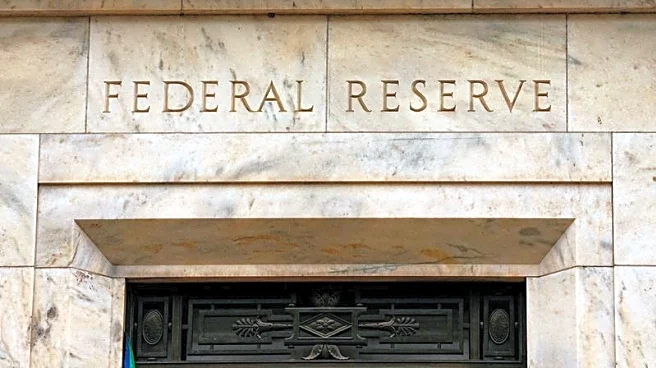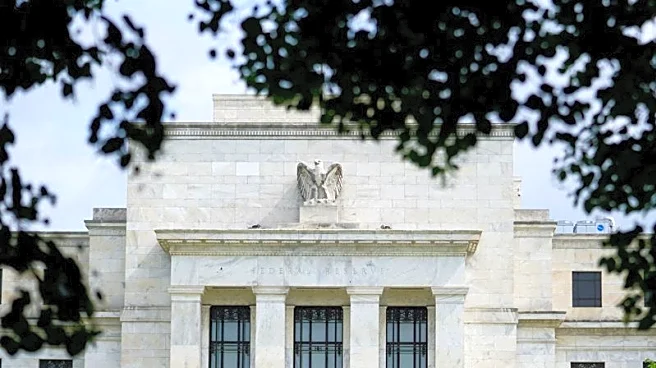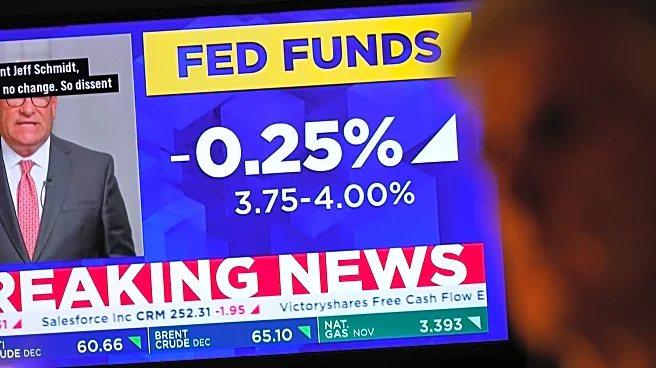What's Happening?
The U.S. Treasury market is experiencing significant changes as the demand base shifts towards more price-sensitive domestic investors. Despite stable demand at Treasury auctions, the term premium has
risen to its highest level in a decade, indicating that investors are seeking higher compensation for holding U.S. Treasuries. The Federal Reserve's quantitative tightening and reduced foreign investor appetite have led domestic investors, such as mutual funds and pension funds, to increase their holdings. This shift poses a risk of increased market volatility and higher interest rates, especially as the U.S. Treasury continues to issue more debt to cover rising deficits.
Why It's Important?
The changes in the U.S. Treasury market have broad implications for the economy and financial markets. As domestic investors become the primary holders of U.S. Treasuries, their sensitivity to price changes could lead to more frequent market turbulence. Higher interest rates could result from the increased term premium, affecting borrowing costs for businesses and consumers. Additionally, the reliance on domestic investors may limit the Treasury's ability to absorb large issuances without causing market disruptions. This situation underscores the importance of monitoring the Treasury market's dynamics, as they can influence economic stability and policy decisions.
What's Next?
The U.S. Treasury is expected to continue issuing significant amounts of debt, potentially increasing by $2 trillion annually over the next five years. The Federal Reserve's anticipated end to its quantitative tightening policy may provide some relief, but the market's reliance on price-sensitive domestic investors could lead to heightened volatility. The Treasury's recent buyback initiatives aim to stabilize the market, but their effectiveness remains uncertain. As the U.S. national debt grows, interventions by the Federal Reserve and Treasury may become more common to manage market stability.
Beyond the Headlines
The shift in demand composition towards domestic investors highlights a structural change in the Treasury market. This trend could lead to long-term implications, such as higher structural volatility and interest rates. The Treasury's actions to stabilize the market, including buybacks, reflect concerns about the growing supply of U.S. Treasuries and the potential for market dislocations. These developments may necessitate ongoing policy adjustments to ensure market stability and economic growth.













